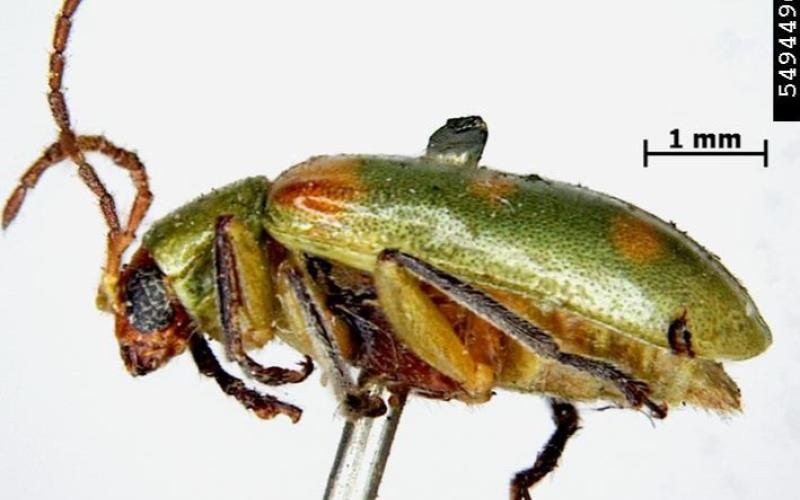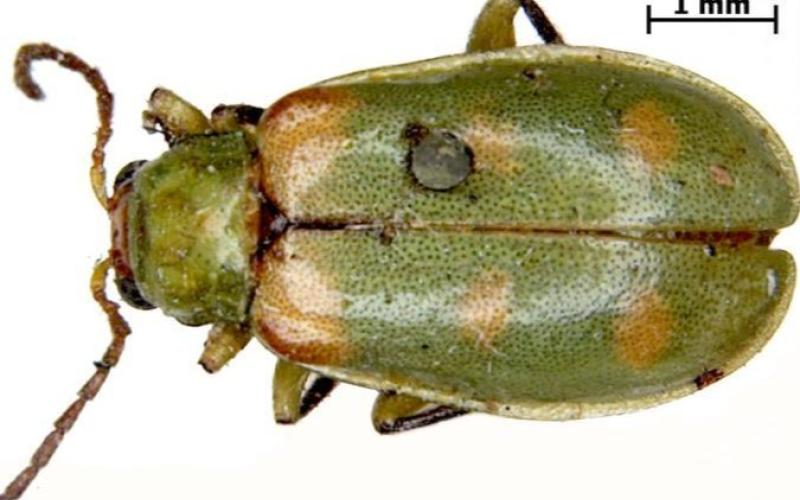Scientific name: Diabrotica speciosa Germar
Native range: South America
At Risk
The cucurbit beetle feeds on a broad range of vegetable crops. In Minnesota, it could pose a threat to corn, soybean and potatoes. This insect may also impact fresh-market vegetables due to its affinity for plants in the gourd family (Cucurbitaceae).
Distribution
The cucurbit beetle is not currently known to occur in North America.
Biology
Adult beetles are moderately cold tolerant. They overwinter in the rosettes and crowns of winter-growing plants, in bordering vegetation, plant debris, woodlots and fencerows.
Adult beetles are free-living and feed on flowers and leaves of host plants. This is the most noticeable life stage.
Eggs are laid in soil near host plants. Young larvae feed on roots, while older larvae feed on the plant up to just below the crown. The number of generations per year varies with climate and latitude. In some tropical areas, they reproduce year-round.
Identification
Adult cucurbit beetles are about 1/4 inch long. They are green to bluish-green with six yellow spots on their backs. The head is reddish-brown to black, and the body is oval in shape.
Other common cucumber beetles in Minnesota, such as the striped cucumber beetle (Acalymma vittatum) and the spotted cucumber beetle (Diabrotica undecimpunctata howardii) can be mistaken for the cucurbit beetle.
Regulatory Status: Potentially Regulated
Federal and state regulations may be implemented if the cucurbit beetle is discovered in Minnesota. These may include restrictions on the movement of materials that potentially harbor cucurbit beetle and efforts to suppress or eradicate infestations.
What Can Be Done?
The MDA monitors for cucurbit beetles through our commodities survey. Contact the MDA via email at reportapest@state.mn.us if you suspect an infestation of cucurbit beetle.



